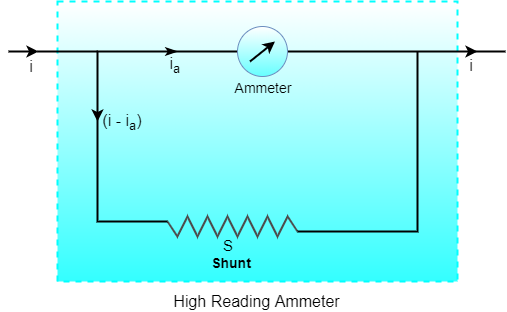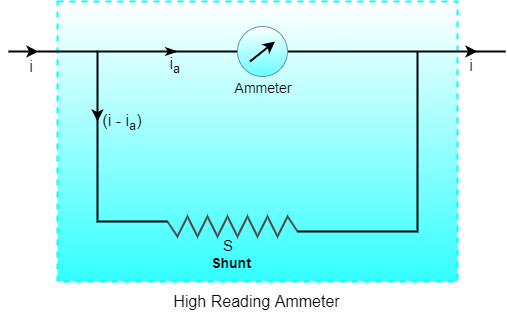Question
Question: The resistance of an ammeter is \(13\Omega\) and its scale is graduated for a current up 100A. After...
The resistance of an ammeter is 13Ω and its scale is graduated for a current up 100A. After an additional shunt has been connected to this ammeter it becomes possible to measure currents up to 750A by this meter. The value of shunt resistance is:
A.) 20Ω
B.) 2Ω
C.) 0.2Ω
D.) 2KΩ
Solution
Hint: You can use the diagrammatic representation using the information through which you will come to know that the potential difference across ammeter and shunt will be the same using these steps to approach toward the solution to the problem.
Complete step-by-step answer:
The basic diagram of a high reading ammeter is given below

According to the given information we know that the ammeter of 13Ω can detect current up to 100 A but after the connecting the shunt with the ammeter with 13Ω it can measure current up to 750 A
Therefore the value of i is equal to 750 A and the value of ia is equal to 100 A and the value of R is equal to 13Ω
Now using the given information let create a diagram of high reading ammeter to get a better idea of this question

Since we know that the potential difference across the shunt and ammeter will be same
Therefore by the above statement we can say that ia×R=(i−ia)×S (equation 1)
Substituting the given values in the equation 1
100A×13Ω=(750A−100A)×S
⇒ S=750A−100A100A×13Ω
⇒ S=2Ω
So 2Ω is the resistance of shunt
Hence option B is the correct option.
Note: In this question we found the resistance of shunt which can be defined as a resistor with very low resistance value. The shunt resistor consists mainly of the material which has the resistance coefficient of low temperature and it is connected in parallel to the ammeter to the range of which it is to be expanded. We know that within an electrical circuit, resistance is a function of opposition to current flow. Usually, an ideal ammeter is a zero resistor.
